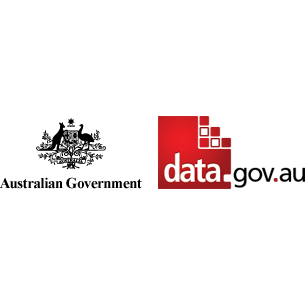Brief description
## **Abstract**This dataset and its metadata statement were supplied to the Bioregional Assessment Programme by a third party and are presented here as originally supplied.
The Geofabric Surface Cartography product provides a set of related feature classes to be used as the basis for the production of consistent hydrological cartographic maps. This product contains a geometric representation of the (major) surface water features of Australia (excluding external territories). Primarily, these are natural surface hydrology features but the product also contains some man-made features (notably reservoirs, canals and other hydrographic features).
The product is fully topologically correct which means that all the stream segments flow in the correct direction.
This product contains fifteen feature types including: Waterbody, Mapped Stream, Mapped Node, Mapped Connectivity (Upstream), Mapped Connectivity (Downstream), Sea, Estuary, Dam, Structure, Canal Line, Water Pipeline, Terrain Break Line, Hydro Point, Hydro Line and Hydro Area.
## **Purpose**
This product contains a geometric representation of the (major) surface water features of 'geographic Australia' excluding external territories. It is intended to be used as the basis for the production of consistent hydrological cartographic map products, as well as the visualisation of surface hydrology within a GIS to support the selection of features for inclusion in cartographic map production.
This product can also be used for stream tracing operations both upstream and downstream however, as this is a mapped representation, streams may be represented as interrupted or intermittent features. In contrast, the Geofabric Surface Network product represents the same stream as a continuous connected feature, that is, the path that stream would take (according to the terrain model) if sufficient water were available for flow. Therefore, for stream tracing operations where full stream connectivity is required, the Geofabric Surface Network product should be used.
## **Dataset History**
Geofabric Surface Cartography is part of a suite of Geofabric products produced by the Australian Bureau of Meteorology. The source data input for the Geofabric Surface Cartography product is the AusHydro v1.7.2 (AusHydro) surface hydrology data set. The AusHydro database provides a seamless surface hydrology layer for Australia at a nominal scale of 1:250,000. It consists of lines, points and polygons representing natural and man-made features such as watercourses, lakes, dams and other water bodies. The natural watercourse layer consists of a linear network with a consistent topology of links and nodes that provide directional flow paths through the network for hydrological analysis.
This network was used to produce the GEODATA 9 Second Digital Elevation Model (DEM-9S) Version 3 of Australia (https://www.ga.gov.au/products/servlet/controller?event=GEOCAT_DETAILS&catno=66006).
Geofabric Surface Cartography is an amalgamation of two primary datasets. The first is the hydrographic component of the GEODATA TOPO 250K Series 3 (GEODATA 3) product released by Geoscience Australia (GA) in 2006. The GEODATA 3 dataset contains the following hydrographic features: canal lines, locks, rapid lines, spillways, waterfall points, bores, canal areas, flats, lakes, pondage areas, rapid areas, reservoirs, springs, watercourse areas, waterholes, water points, marine hazard areas, marine hazard points and foreshore flats.
It also provides information on naming, hierarchy and perenniality. The dataset also contains cultural and transport features that may intersect with hydrographic features. These include: railway tunnels, rail crossings, railway bridges, road tunnels, road bridges, road crossings, water pipelines.
Refer to the GEODATA 3 User Guide http://www.ga.gov.au/meta/ANZCW0703008969.html for additional information.
## **Dataset Citation**
Bureau of Meteorology (2011) Geofabric Surface Cartography - V2.1. Bioregional Assessment Source Dataset. Viewed 12 March 2019, http://data.bioregionalassessments.gov.au/dataset/5342c4ba-f094-4ac5-a65d-071ff5c642bc.
Full description
Geofabric Surface Cartography - V2.1 - Data FileSpatial Coverage And Location
text: POLYGON ((154.1 -44, 154.1 -8.9, 112.8 -8.9, 112.8 -44, 154.1 -44))
Subjects
Australia |
Cooper subregion |
Galilee subregion |
Gloucester subregion |
Hunter subregion |
Namoi subregion |
Sydney Basin bioregion |
WATER-Hydrology |
imageryBaseMapsEarthCover |
inlandWaters |
User Contributed Tags
Login to tag this record with meaningful keywords to make it easier to discover
Identifiers
- Local : 5342c4ba-f094-4ac5-a65d-071ff5c642bc
- URI : data.gov.au/data/dataset/f50452de-7288-4fb9-b460-35e6058b3d0c



